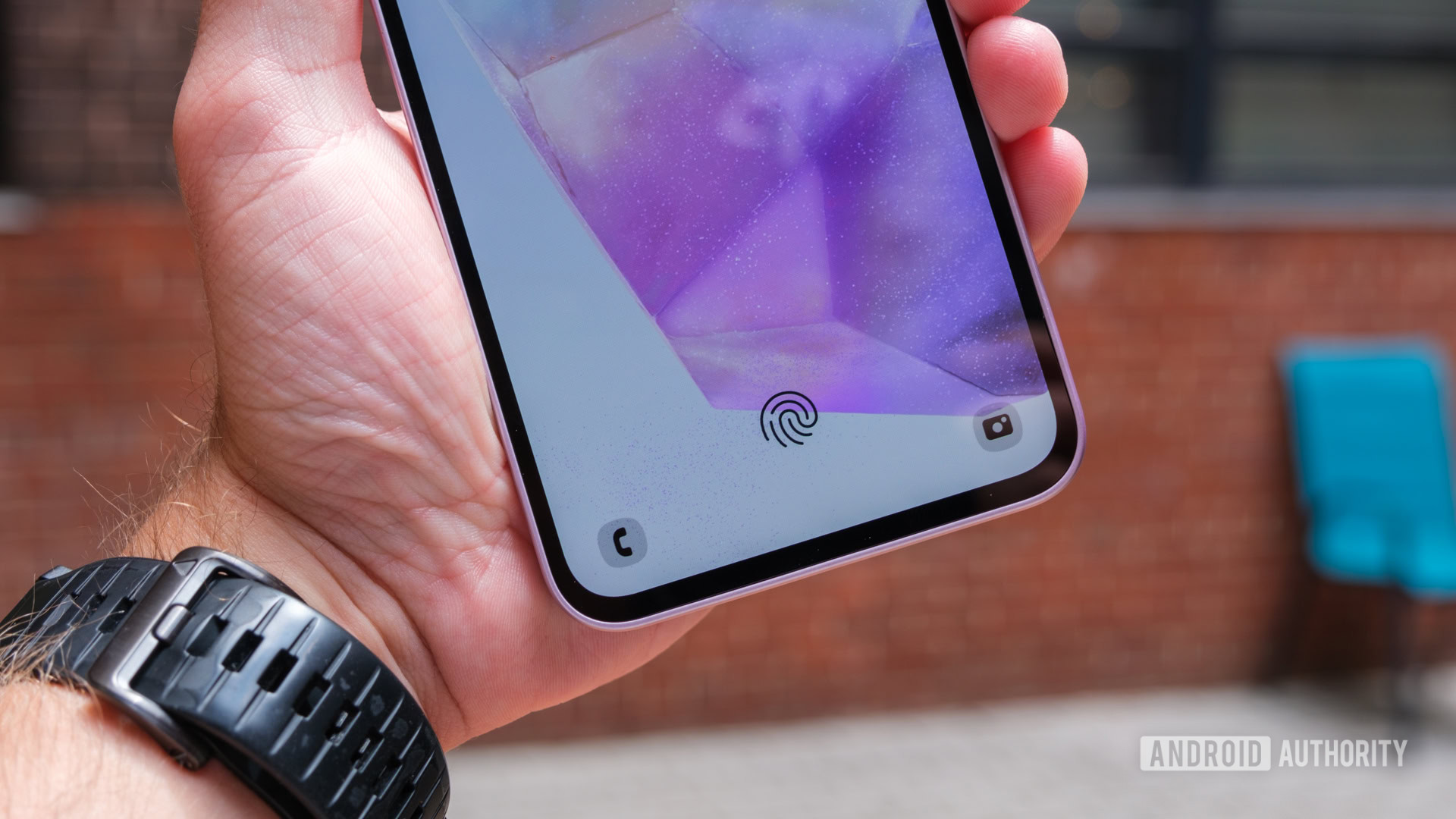Affiliate links on Android Authority may earn us a commission. Learn more.
Android 15 can automatically delete your face or fingerprint unlock if they aren't working well
Published onJune 18, 2024

- Strings in the latest Android 15 beta suggest the OS can automatically delete biometrics that aren’t working well.
- Android will delete your face or fingerprint unlock when they aren’t working well and then prompt you to set them up again.
- We don’t know how the OS determines when a biometric isn’t working well or if this feature is even live yet in the latest Android 15 beta, though.
Most Android phones, even really cheap budget phones, sport some kind of biometric authentication method, whether that be through a fingerprint scanner or facial recognition. However, the accuracy of these sensors can vary drastically between devices due to differences in the sensor technology, the exact part that’s used, the specific tuning done by the vendor, and even the environmental conditions of the user. Internet forums are littered with users complaining about their phones’ biometrics, and one of the most common recommendations to fix biometric authentication issues is to re-enroll their fingerprint or face. The upcoming Android 15 release might proactively help users re-enroll their poorly performing biometrics.
While digging through the latest Android 15 beta, I discovered new strings in the OS framework that suggest that Android will automatically detect when your face or fingerprint models aren’t working well, delete them, and then prompt you to set them up again. Android 15 will show a notification saying that your face or fingerprint model “wasn’t working well and was deleted. Set it up again to unlock your phone” with your face or fingerprint. Since Android only lets you enroll a single face, the notification that’s shown for re-enrolling your face will be slightly different than the one shown for re-enrolling your fingerprint, but there’s no functional difference. Here are the strings in question:
<string name="face_dangling_notification_msg">"Your face model wasn't working well and was deleted. Set it up again to unlock your phone with face."</string>
<string name="face_dangling_notification_title">Set up Face Unlock again</string><string name="fingerprint_dangling_notification_msg_1">"%s wasn't working well and was deleted to improve performance"</string>
<string name="fingerprint_dangling_notification_msg_2">"%1$s and %2$s weren't working well and were deleted to improve performance"</string>
<string name="fingerprint_dangling_notification_msg_all_deleted_1">"%s wasn't working well and was deleted. Set it up again to unlock your phone with fingerprint."</string>
<string name="fingerprint_dangling_notification_msg_all_deleted_2">"%1$s and %2$s weren't working well and were deleted. Set them up again to unlock your phone with your fingerprint."</string>
<string name="fingerprint_dangling_notification_title">Set up Fingerprint Unlock again</string>Android already lets users manually delete their face or fingerprint model by navigating to Settings > Security & privacy > Device unlock > Fingerprint & Face Unlock, selecting Face Unlock or Fingerprint Unlock, and then tapping the “Delete face model” button or trash can icon respectively. However, it’s difficult for users to know when they should do this because they’d have to keep track of how often their face or fingerprint fails to unlock their device.
Android, though, can better keep track of these failures, making it easier for the operating system to know when a particular face or fingerprint model needs to be redone. It’s not clear yet exactly how often a face or fingerprint model has to fail before Android decides it needs to be redone, though I’m sure the threshold must be quite high. We haven’t been able to test this feature out yet and aren’t even sure if it’s live in the latest Android 15 beta, though, so we can only guess at how it works.
Google is expected to release the third beta of Android 15 — Android 15 Beta 3 — sometime soon, as yesterday evening, the company pushed a new set of generic system images (GSIs) through Android’s Dynamic System Updates mechanism. While the build that Google pushed doesn’t have any Pixel-specific changes, it’s likely based on the same codebase used to compile the upcoming Android 15 Beta 3 update for Pixel phones. Furthermore, any changes observed in the Android 15 Beta 3 GSI can be thought of as part of the Android Open Source Project, or AOSP, meaning they’ll be included in all devices upgrading to Android 15.